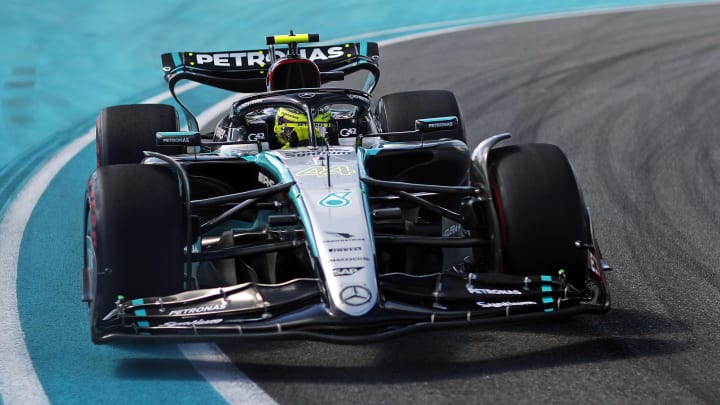FIA Issues Verdict On Front Wing Legality After Doubts On Mercedes And McLaren

After the front wings of McLaren and Mercedes came under the scanner during the recent race at Monza, the FIA issued a statement after thorough scrutiny, clarifying that all cars on the Formula 1 grid comply with the regulations laid out by the governing body.
The FIA had been using cameras to scrutinize front wing movements for flex since the Belgian Grand Prix to assess their legality. In addition, it also gave answers to whether the existing flex tests are effective or require changes. Concerns about the front wings of Mercedes' W15 and McLaren's MCL38 emerged after Ferrari and Red Bull reported them to the governing body during the Italian Grand Prix.
The FIA was also using the data from its camera investigation to assess if a current rule required modification, the effects of which would be seen next year. The topic of flexi front wings has been a matter of intrigue in the current ground effect era since findings revealed that even a small amount of flex beyond the permissible limit can alter the car's performance.
Thus, teams have been utilizing their engineers in the best possible way to make full use of the aeroelasticity while staying within the framework of the regulations, paving the way to reduce drag to a limit where it passes the load-bearing test. From FIA's latest statement released on Tuesday, which was reported by PlanetF1.com, it appears that teams have been benefiting from the flex while staying within the regulations. The statement read:
“The FIA is examining front wings at every event with numerous checks (conformity of surfaces, conformity of deflections) with respect to the relevant F1 Technical Regulation.
“All front wings are currently compliant with the 2024 regulations.
“Since the Belgium Grand Prix, the FIA has acquired additional data during FP1 and FP2 sessions to assess dynamic behaviours through an FIA-mandated video camera which captures areas of the front wing that are not visible through the official FOM cameras.
“This exercise will continue at least up until Singapore to ensure every team will have been running the mandated FIA camera on different types of tracks (low, medium, high, and very high downforce).
“This will ensure a large database allowing the FIA to draw the most objective picture of the situation and quantify differences between the various dynamic patterns observed on track.”
The FIA then explains why it is particularly challenging to assess the front wing, when compared to other components of the car, such as the rear wing and floor edges. The statement continued:
“No component is infinitely stiff, which is the reason why there are load-deflection tests in the Regulations.
“The front wing has been a challenging area throughout the years, because the aerodynamic loading patterns between different competitors varies and it is therefore difficult to find a load vector which will cover all types of front wing construction.
“Other areas of the car – including rear wing and floor edges – have much more consistent aerodynamic loading patterns across the grid, making for a more universal load-deflection test.
“The FIA has the right to introduce new tests if irregularities are suspected. There are no plans for any short-term measures, but we are evaluating the situation with the medium and long-term in mind.”
